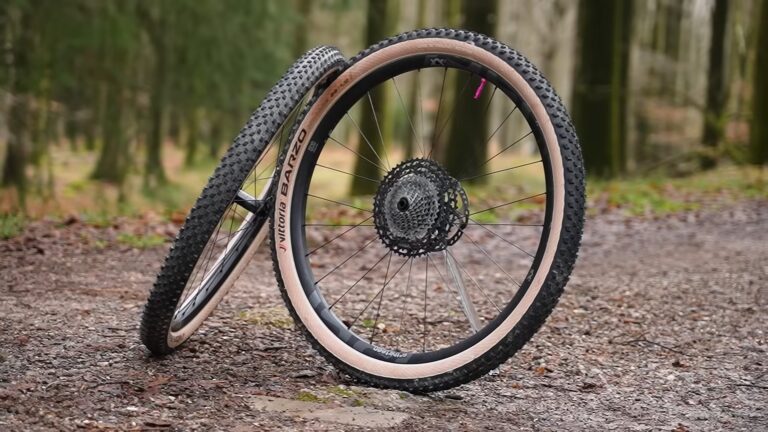Choosing the right mountain bike wheel size isn’t just about aesthetics or fitting in with the latest trends. It’s about optimizing performance, and comfort, and ensuring your rides are as enjoyable as possible.
The wheel size of your mountain bike can significantly influence your riding experience. From how the bike handles on different terrains to how efficiently you can pedal, the diameter of your wheels plays a crucial role. Think of it like choosing the right shoes for a specific sport; the right fit can enhance your performance and comfort.
Mountain bike wheels come in various sizes, each with its own set of advantages and disadvantages. While there are other sizes available, the three most common ones are the 26-inch, 27.5-inch (650b), and 29-inch. As we progress through this article, we’ll discuss each of these sizes in detail.
The Common Mountain Bike Wheel Sizes
26-inch
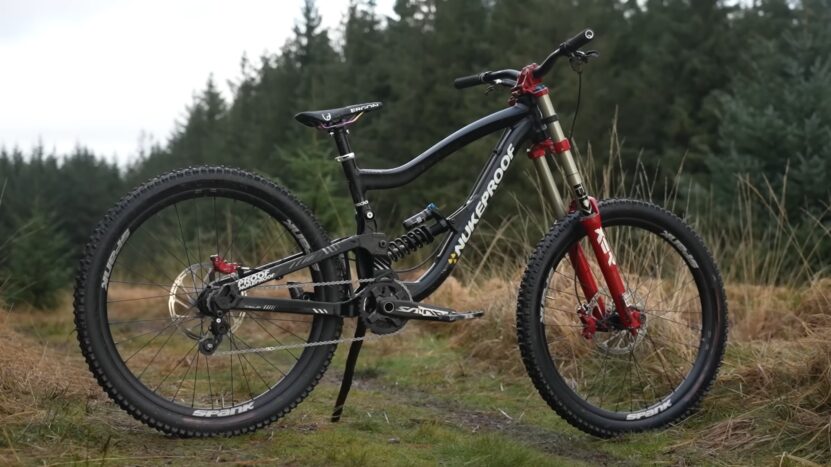
Once the standard for mountain bikes, 26-inch are now less common but still have their place in the biking world.
- Highly maneuverable, making them great for tight trails and switchbacks.
- Generally lighter than larger wheels.
- Often more affordable due to decreased demand.
- Less efficient rolling over obstacles compared to larger wheels.
- Might feel slower on open trails.
27.5-inch (650b)
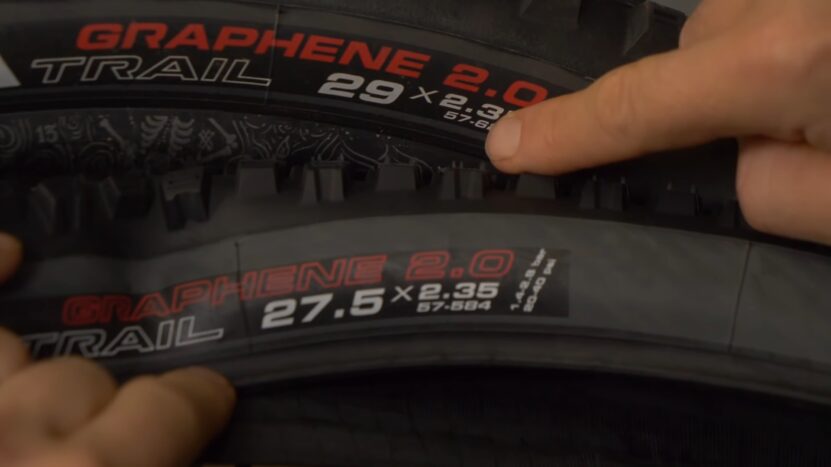
A middle ground between the 26-inch and 29-inch sizes, the 27.5-inch offers a balance of the best features of its siblings.
- Better obstacle rollover than the 26-inch.
- More agile than the 29-inch, making it versatile for various terrains.
- Might not be as efficient as 29-inch on very rough terrains.
- Not as nimble as 26-inch in extremely tight situations.
29-inch
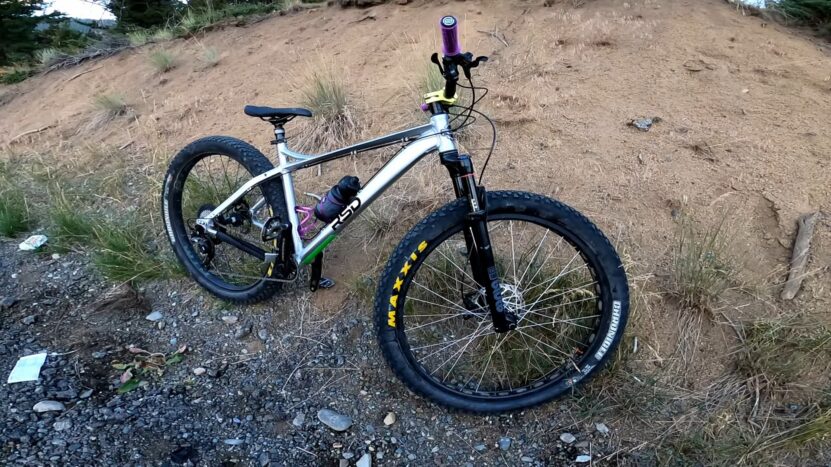
The largest of the common sizes, 29-inch, often referred to as “29ers”, are favored by many riders for specific terrains and riding styles.
- Excellent rollover capability, making them ideal for rough terrains.
- More traction due to a larger contact patch with the ground.
- Can feel less agile in tight trails compared to smaller wheels.
- Typically heavier than smaller diameter wheels.
Factors to Consider
| Riding Style | Recommended Size |
| Cross-country | 29-inch |
| Trail | 27.5-inch |
| Enduro | 27.5-inch or 29-inch |
When it comes to selecting the perfect wheel size for your mountain bike, there’s no one-size-fits-all answer. It’s essential to consider various factors to ensure you make the best choice for your riding style and preferences.
Riding Style
Your riding style can significantly influence the best bike size for you. Let’s break it down:
- Cross-country: If you’re into cross-country riding, where speed and efficiency are paramount, a 29-inch might be your best bet. Its larger diameter offers better rollover, making it easier to maintain speed on rough terrains.
- Trail: For trail riders who encounter a mix of terrains and need a versatile bike, the 27.5-inch can be a great choice. It offers a balance between agility and rollover capability.
- Enduro: Enduro riding often involves tackling challenging terrains. Here, both 27.5-inch and 29-inch can shine, depending on the specific demands of the trail and rider preference.
Terrain
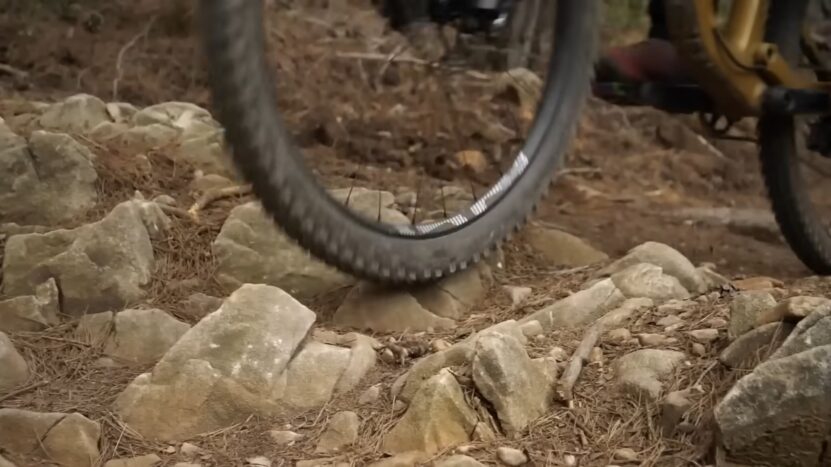
The type of terrain you ride on most frequently can also guide your wheel size choice:
- Smooth trails: On smoother trails, any wheel size can perform well. However, if you’re looking for agility and quick turns, a 26-inch or 27.5-inch might be preferable.
- Rough terrain: For rocky, root-filled, and challenging terrains, a 29-inch rollover capability can be a game-changer.
Frame Compatibility
Lastly, it’s essential to consider your bike frame when thinking about wheel size:
- Frame size: Not all frames are designed to accommodate every wheel size. Ensure your frame can support the wheel size you’re considering.
- Suspension travel: The amount of suspension travel can influence the wheel size that’s best for your bike. For instance, bikes with longer travel might benefit from the stability of a larger wheel.
Wheel Size and Speed
| Aspect | 26-inch | 27.5-inch | 29-inch |
| Rolling Efficiency | Moderate | High | Very High |
| Acceleration | Very High | High | Moderate |
| Comfort | Moderate | High | Very High |
| Traction | Moderate | High | Very High |
Speed on a mountain bike isn’t just about how fast you can pedal. It’s also about how efficiently your bike can roll over obstacles and how quickly it can accelerate from a standstill. Let’s see how different wheel sizes stack up in these aspects.
Rolling efficiency
Larger vs. smaller wheels: Larger, like the 29-inch, generally have better rolling efficiency. This means they can roll over obstacles more easily than smaller ones, maintaining speed on rough terrains. On the other hand, smaller, like the 26-inch, might require more effort to keep up the same pace on bumpy trails.
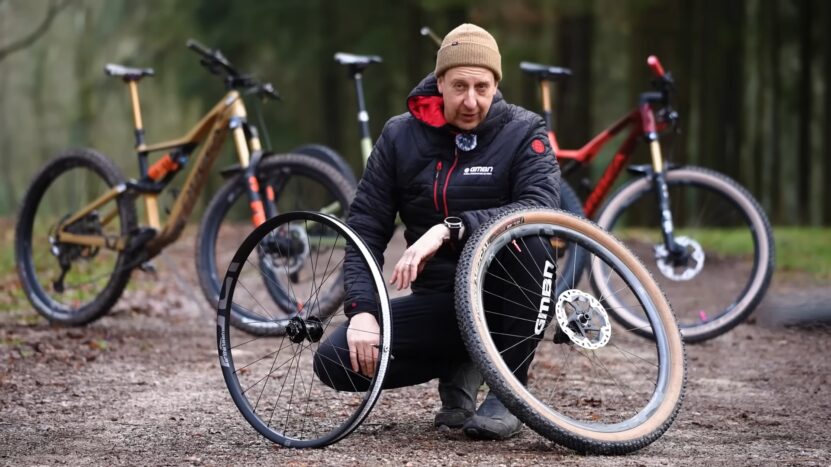
Acceleration and maneuverability
Impact of wheel size on agility: Smaller tend to accelerate faster from a standstill, thanks to their reduced weight and rotational inertia. This can be especially useful in situations where quick bursts of speed are needed. However, larger ones might take a bit more effort to get moving but can maintain higher speeds once they’re up and running.
Wheel Size and Comfort
| Comfort Factor | 26-inch | 27.5-inch | 29-inch |
| Bump Absorption | Moderate | High | Very High |
| Tire Cushioning | Moderate | High | Very High |
Mountain biking can be a bumpy affair, and the right wheel size can make a difference in how much of that roughness you feel.
Suspension performance
How wheel size affects suspension: Larger can sometimes reduce the perceived need for as much suspension due to their natural ability to roll over obstacles. However, suspension settings and performance can vary based on wheel size, with some bikes optimized for specific wheel dimensions.
Bump absorption

Larger and more comfortable: The increased diameter of larger allows them to roll over bumps and holes more smoothly than smaller ones. This can lead to a more comfortable ride, especially on rough terrains.
Tire volume and cushioning
Tire volume can play a significant role in ride comfort. Larger often allow for wider tires, which can offer more cushioning against bumps.
Wheel Size and Traction
| Consideration | Description |
| Personal Preferences | What do you value most in a ride? Speed, agility, comfort, or something else? |
| Terrain & Riding Style | Think about your local trails and your preferred riding style. |
| Test Rides | Try before you buy. Experience different wheel sizes firsthand. |
| Advice from Experienced Riders | Talk to those who’ve been there and done that. Their insights can be invaluable. |
Traction is crucial in mountain biking. Whether you’re navigating a slippery slope or taking a sharp turn, you want your tires to grip the ground firmly.
Contact patch size
Influence on grip: Larger generally have a more extended contact patch (the part of the tire touching the ground), leading to better grip, especially on loose or slippery surfaces.
Traction in corners and technical terrain
How wheel size affects stability: Larger can offer more stability in corners due to their increased gyroscopic effect and larger contact patch. However, smaller can be more agile, allowing for quicker direction changes in technical terrains.
Wheel Size and Weight
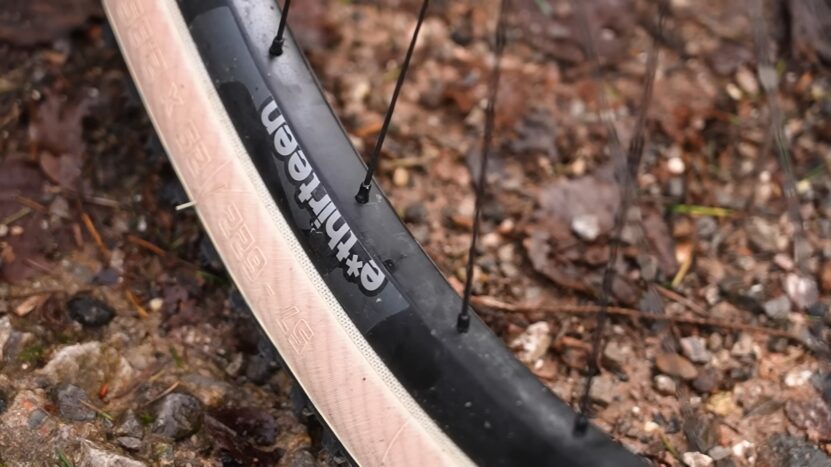
The weight of your mountain bike can influence everything from acceleration to handling. Let’s explore how different sizes can impact the overall weight of your bike and its performance on climbs.
Rotational weight
Impact on overall bike weight: Rotational weight refers to the weight of the wheels, tires, and anything else that rotates when the bike moves. Larger, like the 29-inch, typically have more rotational weight due to their increased size and the heft of the accompanying larger tires. This can make the bike feel heavier, especially when trying to accelerate or make quick maneuvers.
Climbing efficiency
Wheel size and uphill performance: While larger might be heavier, their increased traction and rollover capability can make them more efficient on climbs, especially on rough or technical ascents. On the other hand, the agility and lighter feel of smaller can be advantageous on tight, switchback-filled climbs.
Making the Right Choice
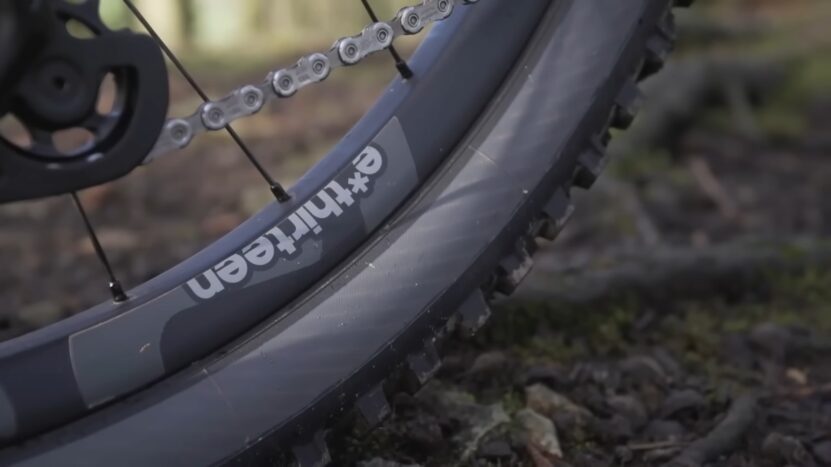
With all this information, you might be wondering, “How do I choose the perfect wheel size for me?” Let’s break it down.
Evaluating personal preferences and priorities
Mountain biking is as much about feeling as it is about technical specifications. Think about what you value most in a ride. Is it speed? Agility? Comfort? Your priorities can guide your choice.
Test rides and bike demos
There’s no substitute for firsthand experience. If possible, test ride bikes with different wheel sizes. Many local bike shops and events offer demo days where you can try out various models.
Seeking advice from experienced riders and professionals
While it’s essential to make a personal choice, talking to experienced riders and professionals can provide valuable insights. They can share their experiences and offer recommendations based on your riding style and goals.
FAQ
Why did mountain bikes transition from the traditional 26″ wheel size to larger sizes like 27.5″ and 29″?
The evolution of mountain bike wheel sizes has been driven by the pursuit of better performance. Larger wheels, such as the 29″, offer improved rollover capability, making it easier to handle rough terrains. They also provide a larger contact patch, which can enhance traction.
On the other hand, the 27.5″ wheel size emerged as a middle ground, offering a balance between the agility of the 26″ and the rollover benefits of the 29″.
How does wheel size relate to the frame and suspension design of a mountain bike?
The frame and suspension of a mountain bike are intricately designed around its wheel size. Bikes with larger wheels might have longer chainstays, wheelbases, and taller stack heights. Suspension components also need to be tailored to accommodate different wheel sizes. For instance, 29ers might have less suspension travel than their 27.5″ counterparts due to the larger wheel size.
Is there a specific wheel size recommended for shorter or taller riders?
While wheel size preference can be subjective, generally, shorter riders (around 5’7” or below) might find 29ers too big and may prefer 26″ or 27.5″ wheels. Conversely, taller riders might feel more comfortable and natural on 27.5″ or 29″ wheels.
Are there mountain bikes with mixed wheel sizes, like a larger wheel in the front and a smaller one in the back?
Yes, some mountain bikes feature a mixed-wheel setup, often referred to as a “mullet” setup. This might include a 29″ wheel at the front for better rollover and a 27.5″ wheel at the back for increased agility and acceleration. The choice of such a setup is often based on specific riding conditions and rider preferences.
Conclusion
Mountain biking is a journey, both literally and figuratively. As we’ve explored throughout this article, the wheel size of your bike can significantly influence that journey. From the speed and agility on the trails to the comfort and traction under various conditions, your wheels play a pivotal role.
Choosing the right wheel size isn’t a mere technical decision; it’s about enhancing your riding experience. The right wheel can make your rides smoother, more enjoyable, and more aligned with your biking goals. It’s akin to finding the perfect pair of shoes that not only fit well but also complement your style and the challenges you want to tackle.
Mountain biking is as much about exploration as it is about the ride. Just as you’d explore new trails and terrains, take the time to explore different wheel sizes. Test ride different bikes, talk to fellow riders, and immerse yourself in the experience. After all, the journey to find the perfect wheel size is just another exciting part of your mountain biking adventure.

